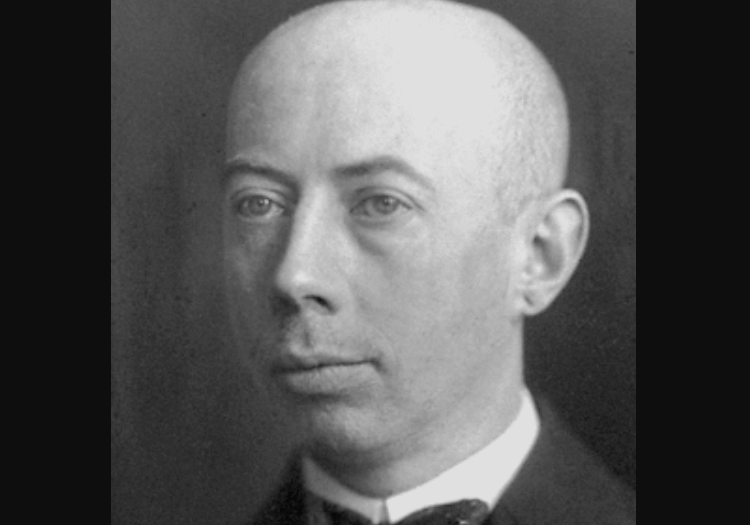Explore the life and achievements of Gustav Ludwig Hertz, the German physicist known for co-discovering the Franck-Hertz experiment and validating the quantization of energy levels in atoms. Discover his groundbreaking studies, prestigious awards, and lasting contributions to the field of quantum mechanics and atomic physics.

Gustav Ludwig Hertz was a German physicist who lived from July 22, 1887, to October 30, 1975. He is best known for his co-discovery of the Franck-Hertz experiment, which provided experimental evidence for the quantization of energy levels in atoms and contributed to the development of quantum mechanics. Hertz’s work on electron collisions with atoms helped validate and expand the Bohr model of the atom, which had been proposed by Niels Bohr in 1913.
For their groundbreaking research on the Franck-Hertz experiment, Gustav Hertz and his collaborator James Franck were awarded the Nobel Prize in Physics in 1925. Gustav Hertz’s contributions to the field of atomic physics played a significant role in advancing our understanding of the behavior of electrons and atoms, helping to pave the way for the development of modern quantum theory.
Biography
Gustav Ludwig Hertz was born on July 22, 1887, in Hamburg, Germany. He came from a family of academics, with his father being a professor of physiology and his grandfather a well-known anatomist. This background likely influenced his interest in pursuing a career in science.
Hertz studied engineering in Munich and later pursued a Ph.D. in physics at the University of Berlin under the guidance of Heinrich Rubens. After completing his doctorate in 1911, he worked as an assistant to physicist James Franck at the University of Berlin.
In 1913, Niels Bohr proposed his revolutionary atomic model, which described the quantization of energy levels in atoms. Hertz became intrigued by this theory and decided to conduct experiments to test its validity. In 1914, while working with Franck, he began the series of experiments that would later become known as the “Franck-Hertz experiment.”
The Franck-Hertz experiment involved passing electrons through a vapor of mercury atoms and measuring the energy they lose during collisions with the mercury atoms. The results of the experiment provided crucial experimental evidence for the quantization of energy levels in atoms, supporting Bohr’s atomic model.
Unfortunately, the outbreak of World War I interrupted Hertz’s research, and he served in the German army. After the war, he resumed his scientific work and continued his collaboration with James Franck. Their groundbreaking findings on the Franck-Hertz experiment were published in 1914-1915.
In recognition of their significant contributions to atomic physics, Gustav Hertz and James Franck were jointly awarded the Nobel Prize in Physics in 1925. The Nobel Committee specifically acknowledged their work on the Franck-Hertz experiment, stating that it “provided the most direct experimental support to the quantum theory of atomic and molecular structure.”
Gustav Hertz continued his scientific career and held various academic positions throughout his life. He became a professor of physics at the Technische Hochschule Berlin (now known as the Technical University of Berlin) and later at the University of Halle-Wittenberg.
During the Nazi regime in Germany, Hertz faced challenges as he had Jewish heritage through his mother’s side. Despite these difficulties, he managed to maintain his academic position and continued his research. After World War II, he became a founding member of the German Academy of Sciences and served as its president from 1950 to 1960.
Gustav Ludwig Hertz’s work significantly contributed to the development of quantum mechanics and atomic physics. He made fundamental discoveries that paved the way for modern understanding of the behavior of electrons and atoms. Hertz passed away on October 30, 1975, leaving behind a legacy of groundbreaking research and scientific achievement.
Scientific Studies:
- Franck-Hertz Experiment: Gustav Hertz’s most significant scientific study was his co-discovery of the Franck-Hertz experiment, conducted with James Franck in 1914-1915. The experiment provided crucial evidence supporting the quantization of energy levels in atoms, validating Niels Bohr’s atomic model and contributing to the development of quantum mechanics.
- Electron Collisions with Atoms: Throughout his career, Hertz conducted research on the interactions of electrons with atoms. His work in this area helped to advance our understanding of atomic and molecular structure, contributing to the development of atomic physics.
- Electron Emission from Metals: Hertz also conducted studies on the emission of electrons from metal surfaces, exploring the phenomenon known as the photoelectric effect. His work in this area added to the growing body of knowledge on quantum phenomena and the behavior of electrons.
Awards and Honors:
- Nobel Prize in Physics (1925): Gustav Hertz and James Franck were jointly awarded the Nobel Prize in Physics in 1925 for their research on the Franck-Hertz experiment. The Nobel Committee recognized their work as providing direct experimental support for the quantum theory of atomic and molecular structure.
- Max Planck Medal (1959): Hertz was awarded the Max Planck Medal by the German Physical Society in 1959. This prestigious award is presented in recognition of outstanding achievements in theoretical physics.
- Honorary Doctorates: Throughout his career, Hertz received several honorary doctorates from esteemed universities, acknowledging his significant contributions to the field of physics.
- Memberships: Hertz was a member of various scientific academies and societies, including the German Academy of Sciences (later known as the German Academy of Sciences at Berlin) and the Leopoldina, the German National Academy of Sciences.
Gustav Ludwig Hertz’s work and discoveries played a crucial role in advancing our understanding of quantum mechanics and atomic physics. His contributions were recognized not only through awards and honors but also through his lasting impact on the field of physics and the development of modern scientific theories.